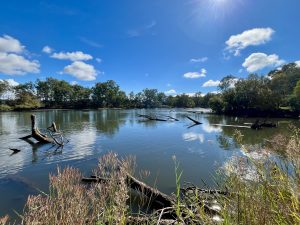Parklands Albury Wodonga have been working in partnership with a diverse range of Friends Groups, Landcare Groups and other partners to install almost 1,000 nestboxes across this region.
Over time the design and placement of boxes has changed in an effort to address the finer points of creating artificial habitat. Minimising potential damage to trees, discouraging use by non-target species like European honeybees and common myna, extending the length of time a box will remain secured to the tree, improving safety and efficiency for installation and monitoring, and ensuring boxes are fit for purpose are all design considerations.
The observations of landholders, Rangers and volunteers who regularly monitor the regional nestbox network are crucial to the improvement process. Over the years their notes, coupled with the consideration and engineering skills of local Men’s Shed volunteers, have led to significant improvements in design.
Now, increasingly hot summers are of particular concern. Observers have reported gliders collapsed on the ground below artificial habitat boxes during heatwaves.
To address this issue, Wodonga Men’s Shed have taken on the challenge to trial some ‘boxes within boxes’ which will be insulated and provided with holes for air circulation. These will be installed in the coming month as part of a trial to test whether insulated nestboxes provide improved habitat for gliders.
Despite the backlog of jobs at the local Men’s Sheds due to ongoing Lockdowns and restrictions on volunteering, we are grateful for the efforts of Thurgoona and Wodonga Men’s Sheds in getting these 100 nestboxes built and ready for installation. We are hopeful of reports of improved temperatures in these boxes on extreme days.
This work is part of Parklands Landcare Led Bushfire Recovery project, supported by the Australian Government’s Bushfire Recovery Program for Wildlife and their Habitat.






